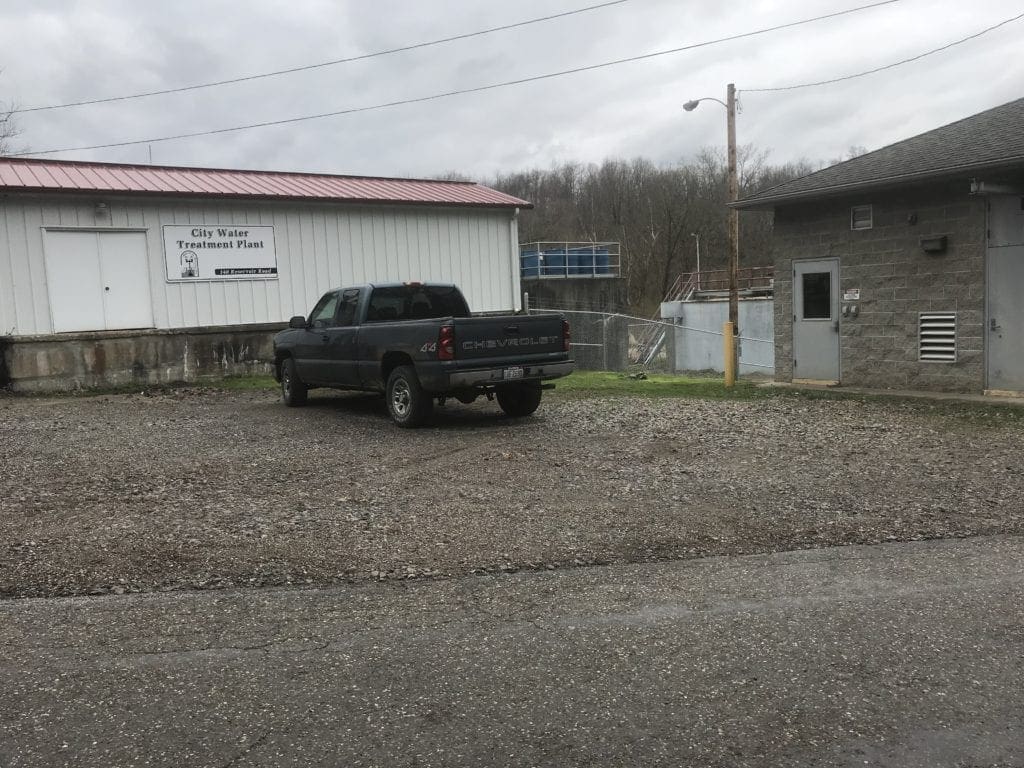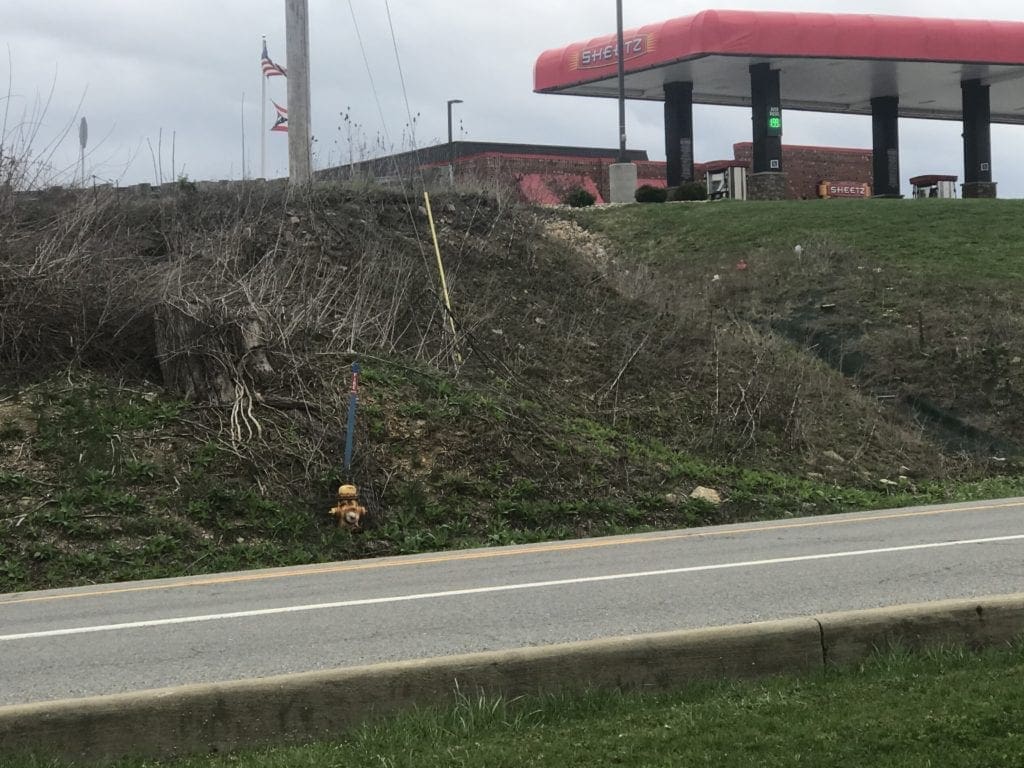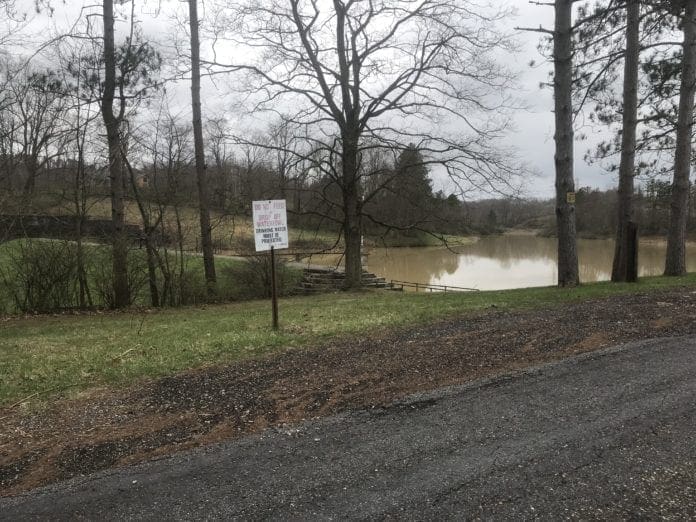During the more than three-hour conference call that was Monday night’s St. Clairsville City Council meeting, a number of topics were discussed as they relate to the city’s water woes.
Council members heard from officials with Aqua Ohio, they heard from engineer Jeff Vaughn, they talked about potential privatization, EPA mandates, problems fixed, and about problems waiting to be fixed. Through all the presentations and questions, though, one simple question, and its response, stood out from the others.
“One way or another, we’ll be using Belmont County or Martins Ferry water, whether we do it on our own, or go with Aqua Ohio?” Councilman John Bukmir asked Vaughn after his presentation on how the city has worked to take care of the list of 17 items listed by the Ohio Environmental Protection Agency.
Vaughn’s response? In short, yes.
“That would be my opinion,” Vaughn said. “In the long term, I just don’t see, and many others would also agree, that the reservoir is not a good, long-term source for the city. And I don’t believe it’s a good idea to blend the groundwater with the surface water because of the different water chemistry.”
So, there you have Point A, present day, along with Point B, where the city is headed in all likelihood. How it gets to that point is what’s up for debate.

Aqua Ohio Presents First
Aqua Ohio had two representatives call in to speak on its behalf: President and Chief Operations Officer Ed Kolodziej and Tony Mancari, Aqua’s director of municipal services.
The pair had a PowerPoint presentation prepared and spent the first few minutes recapping the timeline of all the steps taken from when Aqua first contacted the city in 2017 and through the tabled third reading of an ordinance to sell to Aqua in late fall 2019.
While Kolodziej said nothing had changed with the company’s proposal from what was submitted to be voted on last fall, he and Mancari did want to touch on some of the highlights of what would be done in the event Aqua takes ownership.
“The interesting challenge revolves around the treatment facility for the water plant,” Kolodziej said. “The other big issue to deal with is the is the overall water distribution system, the quality and integrity of the pipes and ensuring the water is safe when it comes to residents’ homes. Then with wastewater, there are issues with the gathering system.”
He also mentioned the need to find the unaccounted-for water that amounts to roughly 50 percent of what the city pumps per day. Some of that is unmetered usage, but the rest is from leakage throughout the town’s aging lines.
“Our first priority would be getting the water plant compliant,” Mancari said. “Then the first few years, focus our efforts on distribution system; one, to improve fire protection; and two, to improve water quality. There are old pipes with pressure issues, quality issues. And third, we want to get a better handle on the distribution system; find out where the water is going.”
Kolodziej also mentioned the city’s current employees would be retained by Aqua and would have the option to work at one pay rate and retain their current pensions; or two, switch to Aqua’s pay scale and utilize its 401k offerings.
Councilman Frank Sabatino had first opportunity to ask questions following the presentation and, after confirming that the financials and proposed work orders remained the same from the fall, got the elephant in the room question out of the way.
“You mentioned partnerships, relationships and being active in the community,” Sabatino began. “As you know, there was a lot of negativism, backlash and protests with the city, even amongst council. How would Aqua form a working relationship in this kind of environment.”
Kolodziej thanked Sabatino for bringing things right to the floor before answering.
“We met with a subgroup of this group in preparing for this meeting,” Kolodziej said. “It was said that it was more what was going on between the parties of the prior administration and how things had been handled and, in a matter of speaking, Aqua got caught up in that level of political turmoil. We maintained a neutral position on how things were being handled. We were asked to provide a proposal and I believe we did so. I think you already have some evidence of our willingness to partner.”
Councilman Perry Basile then questioned one aspect of Aqua’s plan when he asked about the thinking behind spending $3.5 million on the water plant when the city’s likely is going away from surface water in the future anyway.
“This plan was developed almost a year ago, before some of the consent orders came out from the EPA, and other mitigating factors,” Mancari said. “As I mentioned before, we don’t anticipate the EPA saying you can’t use (the reservoir) as a source, but what they will say is if you use it, it has to comply with all these requirements. When we made the plan, we took that into consideration. But if there is a more efficient option, either augmented the system with a different source, or purchasing off the county or elsewhere, we would go with the most cost-effective solution.”

Vaughn Talks EPA Compliance
Vaugh of Vaughn, Coast and Vaughn, who had helped the city in its response to a list of 17 proposed orders handed down from the EPA, briefly touched on each one and gave a status report.
Many were minor and most of those have been taken care of, but there were a couple that stood out.
One was to repair the intake structure at the water plant, the lowest of the three gates used to take water into the plant. The top two are operational, the lowest is not. The city didn’t want to repair that because of cost and scope, along with the fact that eventually the plant would be retired in favor of bulk water purchase. The other major repair was a clarifier-turning mechanism that has been leaking oil that, while not harmful to the water, the EPA still wanted it either replaced or a way to collect the leakage found and implemented.
But the big one was the fact the EPA still awaits the city’s long-term plans for its water supply.
“They never heard from the city about the plan; there was never a response,” Vaughn said. “They looked at the plant and reservoir condition and didn’t see it as a long-term source of water for the city without major upgrades to the infrastructure. The city asked for more time for the overall plan.”
That time was granted, and city leaders, administrators, and Vaughn are set to come up with a solution to placate the EPA.
That solution is bulk water purchase.

Where to Buy and How Much
Vaughn talked how the city met with Martins Ferry officials on the prospects of purchasing groundwater from Ferry, and also talked with the county. He noted it was decided that Belmont County was the logical choice for a long-term solution to the water supply. However, that supply would not be available as a 100-percent backup of the city’s demands for another five years as the county is currently upgrading its system, replacing its plant and other key upgrades.
Given last summer’s drought, the EPA doesn’t want the city to wait five years to find a 100-percent backup
“The City has a current booster station installed in 2004 as a joint project with the county that could be a partial backup,” Vaughn said. “It could provide up to 325,000 gallons per day. The pump station could pump more, but that’s all the county’s system can provide. The city needs up to 600,000 (gallons) per day.”
Vaughn noted that number will fall once the city gets meters installed to track the unmetered usage and then sets to work, with the help of offered assistance from the city of Martins Ferry’s water employees, to locate and repair the major leaks around town. That, coupled with a water audit, would give city leaders a better idea of how much water it actually needs.
Another boost could come in getting an old county connection back online. Vaugh said there is an in-ground booster station the county used to use on U.S. 40 across from the Eagles building. That station could provide a max of 250 thousand gallons a day, adding up to 575 thousand.
Vaugh did say there might be a grant available for that booster station and the price tag could come in less than $50,000.
Councilwoman Linda Jordan inquired about the future of the water plant should the city opt to purchase bulk water.
“In the long run the plant would be retired,” Vaughn said. “In its present form, it can’t continue much longer.”
Council again meets Monday at 7:30 p.m. via teleconference. The city’s website will have the dial-in number and access code available so residents can call and listen in.


